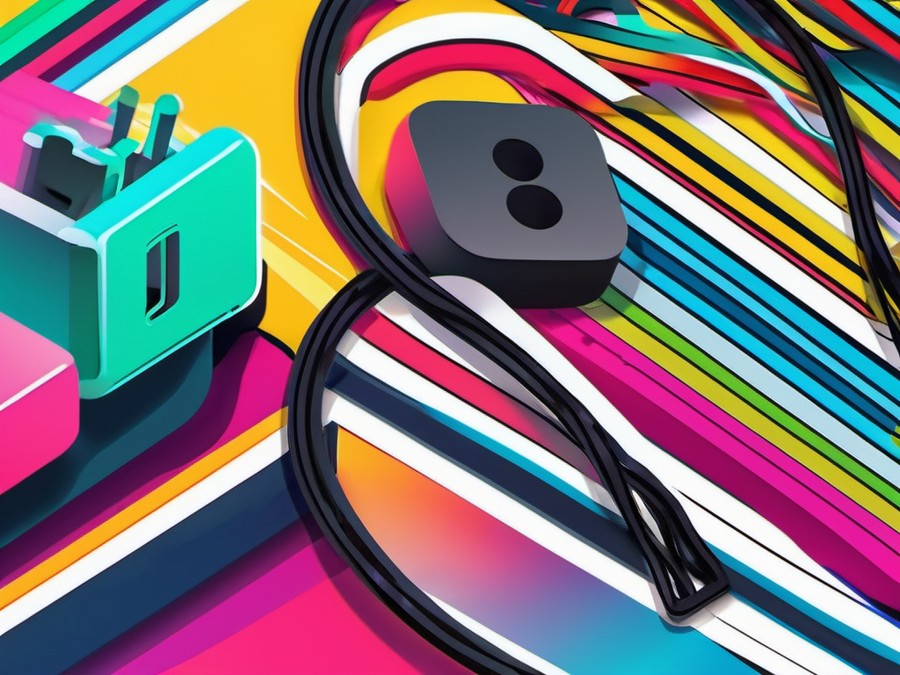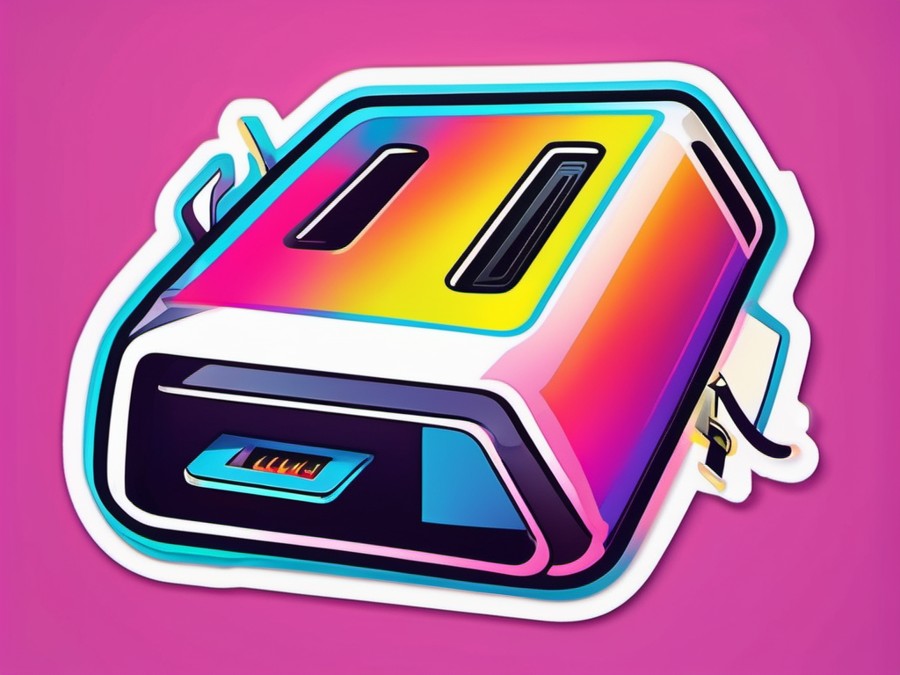· Charlotte Will · Chargers & Cables · 8 min read
What is a Braided Cable and Why is it Better for Durability?
Discover why braided cables are superior when it comes to durability. Learn about their construction, benefits, and how to choose the best one for your needs. Upgrade your tech accessories with braided cables today!

Imagine you’re on a road trip, and your car breaks down in the middle of nowhere. You reach for your phone to call a tow truck, but realize you’ve been using the same charging cable for months now, and it’s starting to fray. Gulp. You know what that means—it’s only a matter of time before it gives out completely. Sound familiar?
Braided cables are here to save the day. Not only do they look sleek and modern, but they’re designed with durability in mind. So, what exactly is a braided cable and why is it better for durability? Let’s dive in.
Understanding Braided Cables
The Origin and Evolution of Braided Cables
The story of braided cables starts with a simple need: how to make cables that last longer and withstand more abuse. Early cables were often made of plastic or rubber, which could easily wear out, especially in high-use environments like offices and factories. The answer was to braid the cable, creating a more resilient structure that could handle the daily grind.
The Engineering Behind Braided Cables
Braided cables aren’t just woven together for looks; there’s serious engineering involved. The braiding process involves intertwining multiple wires or strands to create a single, flexible cable. This structure distributes stress evenly across the cable, preventing any one area from bearing too much load.
Common Types of Braided Cables
From USB to HDMI and beyond, braided cables come in many flavors:
- USB Cables: Perfect for charging devices on the go.
- HDMI Cables: Ideal for connecting your television or projector to a high-quality high-quality HDMI cable.
- Ethernet Cables: Great for reliable internet connections.
Each type of cable can benefit from braiding, ensuring that no matter what you plug in, it’ll stand the test of time.
The Anatomy of a Braided Cable
Outer Jacket Materials
The outer jacket is the cable’s first line of defense. Materials like nylon or PVC are commonly used because they’re durable and can withstand a lot of punishment. This layer not only protects the inner wires from physical damage but also insulates them from electrical interference.
Inner Strands and Their Purpose
The inner strands are the heart of the cable, carrying electrical signals. In a braided cable, these strands are woven together to create a stronger, more flexible structure. This design helps maintain the cable’s electrical integrity even under stress.
Shielding and Its Importance
Shielding is crucial for preventing signal interference. In braided cables, foil or wire mesh shielding is often used to create a barrier around the inner wires. This helps block out electromagnetic interference, ensuring that your cable delivers a clean signal every time.
Color Coding and Aesthetics
While durability is key, let’s not forget about aesthetics. Color coding helps distinguish different types of cables, making your setup look neat and organized. Plus, who doesn’t love a cable that looks good while it works hard?
Braided Cables vs. Traditional Non-Braided Cables
Construction Differences
Traditional non-braided cables are usually made of a single, solid cord with minimal flexibility. In contrast, braided cables have multiple strands woven together, creating a more flexible and durable structure.
Flexibility and Bend Resistance
Braided cables are designed to bend without breaking. Their flexible nature means they can withstand the constant bending and twisting that comes with everyday use. Traditional cables, on the other hand, can become brittle and snap over time.
Tangle-Free Advantage
We’ve all dealt with the frustrating rat’s nest of tangled cables under our desks. Braided cables are less prone to tangling, making them a great choice for cluttered environments. Their smooth outer jacket reduces friction, keeping them tangle-free and easy to manage.
Real-World Durability Tested
Laboratory Tests and Simulations
In the lab, braided cables undergo rigorous testing to ensure they can handle real-world conditions. They’re bent, twisted, and even stepped on to see how they hold up. This testing helps manufacturers refine their designs, ensuring that the cables you buy are built to last.
Everyday Use Cases
Think about your daily life—you might plug and unplug your cable dozens of times a day. Braided cables are up to the task, whether you’re using them at home, in the office, or even outdoors. Their durability means you can rely on them no matter what your day throws at you.
Long-Term Wear and Tear
Over time, traditional cables can start to fray and look shabby. Braided cables retain their appearance and functionality even after months or years of use. This longevity makes them a smart investment for anyone who wants their tech accessories to last.
Benefits Beyond Durability
Aesthetic Advantages
Let’s face it, braided cables just look cool. Their sleek design and often vibrant colors can add a touch of modernity to any setup. Whether you’re showing off your gaming rig or just want a neat-looking office space, braided cables fit the bill.
Ease of Use and Maintenance
Braided cables are user-friendly, with features designed to make your life easier. Many come with strain relief at the ends, preventing damage from sudden pulls or tugs. And because they’re less likely to tangle, you won’t be spending precious time untangling cords.
Safety Features
Modern braided cables often include safety features like overcurrent protection. This ensures that if something goes wrong—say, a short circuit—the cable can safely cut off power before any damage is done.
Choosing the Right Braided Cable for Your Needs
Evaluating Manufacturers and Brands
When it comes to cables, not all brands are created equal. Look for reputable manufacturers who prioritize quality and durability. Reading reviews and comparing specs can help you make an informed decision.
Assessing Length and Gauge
The length and gauge of a cable matter, especially if you need it for specific uses. Gauge refers to the thickness of the wire, with lower gauge numbers indicating thicker wires. Thicker wires can transmit more power, making them ideal for high-demand applications like fast charging.
Special Features and Add-Ons
Some braided cables come with bonus features like built-in LED lights or magnetic tips. These extras can make your cable even more versatile and convenient to use.
Maintaining and Prolonging the Life of Your Braided Cable
Storage Tips and Tricks
Proper storage is key to extending the life of your braided cable. Keep it clean, avoid excessive bends or twists, and store it in a cool, dry place. This will help prevent any unnecessary wear and tear.
Cleaning and Care
Regular cleaning can also prolong the life of your cable. Wipe it down with a damp cloth to remove any dirt or grime that may have accumulated. Avoid using harsh chemicals, as these can damage the cable’s outer jacket.
Avoiding Common Pitfalls
One common mistake is wrapping the cable too tightly. This can cause the inner wires to fray over time. Instead, opt for loose loops or use cable ties to keep your cables organized and protected.
Myths and Misconceptions About Braided Cables
Debunking Durability Myths
Some people believe that braided cables are only as durable as the weakest strand. While it’s true that a single strand can break, the braiding process distributes stress evenly across all strands, making it much less likely that one will snap.
The Role of Strain Relief
Strain relief is crucial for any cable, not just braided ones. It prevents the cable from being pulled or twisted too much at the connection points, extending its lifespan.
Fiber Optics and Braided Cables
You might wonder, can fiber optic cables benefit from braiding? While not as common, some fiber optic cables are indeed braided for added durability. These are often used in industrial settings where cables need to withstand extreme conditions.
Conclusion
So, what’s the verdict on braided cables? They’re not just a stylish accessory; they’re an investment in durability and longevity. Whether you’re looking to charge your devices, connect your home theater system, or enhance your internet experience with a cable modem, braided cables are the way to go.
Don’t settle for cables that fray or snap after just a few months of use. Opt for the strength and reliability of braided cables, and you’ll never have to worry about being stranded with a dead phone again.
FAQs
- What makes braided cables more durable than regular ones? Braided cables are designed with multiple strands woven together, providing excellent flexibility and resistance to wear and tear.
- Are braided cables more expensive than non-braided ones? While they may have a higher upfront cost, the longevity and reliability of braided cables often make them a better long-term investment.
- Can braided cables be used in all environments? Braided cables are versatile and can be used in various settings, from home offices to industrial workplaces.
- How should I store my braided cable when not in use? Proper storage involves keeping the cable clean, avoiding excessive bends or twists, and storing it in a cool, dry place.
- What if my braided cable starts to fray? Is it still safe to use? If you notice fraying, it’s best to replace the cable immediately. Frayed cables can pose safety risks and may not function optimally.
Stay connected with the best USB Type-C cable and experience the difference for yourself. Until next time, Happy Cable Hunting! ð🚀




